Karomia speciosa
| Botanical Name | Karomia speciosa |
|||||||||||
| Family | Lamiaceae - The mint and salvia family |
|||||||||||
| Pronunciation | ka-RO-mee-uh spee-see-OH-suh |
|||||||||||
| Common Name(s) |
English: Southern Chinese hats; Wild Parasol Flower
Afrikaans: Sambreelblom
|
|||||||||||
| Plant Group |
|
|||||||||||
| Plant Size |
|
|||||||||||
| Position |
|
|||||||||||
| General Information |
|
|||||||||||
| Specific Information | Karomia speciosa is a single- or multi-stemmed shrub or tree which produces a profusion of purple flowers with a pink to mauve, saucer-shaped, papery calyx. The flower falls off but the pink base persists, leaving splash of colour for weeks after the flowers have officially disappeared. In sub-tropical areas this tree is evergreen but it becomes deciduous when grown in cooler climates. Although this moderately fast-growing shrub reaches 3-4 meters, it can be reduced in size and shaped through regular pruning. This showy specimen always stops visitors to the garden in their tracks with cries of admiration. |
|||||||||||
| Ad Break | ||||||||||||
| Flowers | ||||||||||||
| Description | a small purple flower set in a pink calyx |
|||||||||||
| Season |
|
|||||||||||
| Colour |
|
|||||||||||
| Growth Rate |
|
|||||||||||
| Plant Uses |
|
|||||||||||
| Distribution and Habitat | northernmost KwaZulu-Natal, Mpumalanaga and Limpopo, Swaziland and north into Tropical Africa, in bush or wooded areas on hot, dry, rocky slopes as well as in riverine thickets |
|||||||||||
| Planting Suggestions | Karomia prefers full sun but can tolerate a little shade. Mulch well and water regularly - about once a week. The old method of digging a deep hole and filling it with soil and compost has resulted in many trees failing to thrive, dying, rotting at the base or worse still, falling over in later years due to poor root development. Refer to the following sites for the best method of planting trees: International Society of Arboriculture: New Tree Planting Tree People: Plant the right way For those of you who have a clay problem try: |
|||||||||||
| Medicinal Uses | No data found. |
|||||||||||
| Ad Break | ||||||||||||


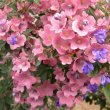

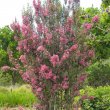
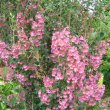
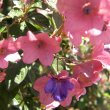
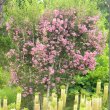


Comments
karomia speciosa in Seychelles
I am growing a Karomia Speciosa in my garden in Mahe, Seychelles, but the blooms are orange and peach colours, not blue. Is this a mutated species?
KORMAI SPECIOSA
I see that most are blue in colour, I am looking for a orangy/brown coloured as seen in someones garden. Is it available in Mpumalanga ?
Holmskioldia sanguinea
Hi Rose
The plant you are looking for is Holmskioldia sanguinea. Previously Karomias were known as Holmskioldia, but when the name changed, this left only in this particular plant in the Holmskioldia group. Despite reports that it is indigenous to, amongst others, Mpumalange, Mozambique and East Africa, it is in fact a native plant of the Himalayan foothills and Malaya. Originally red in colour it has been hybridised and is available in shades of orange and yellow.
As to where you would be able to find one, I really cannot say. I found no reference of the plant for sale in South Africa. The only suggestion I can make is Google for plant nurseries in Mpumalanga and phone around to see if you can find a specimen.
Kind regards
Lorraine
Holmskioldia Sanguinea
I have the red and orange blooms on my Holmskioldia plant
in Seychelles. It is a very rarely seen exotic plant imported recently to Mahe island.
Holmskioldia sanguinea
Hi Mia
Thanks for your reply. I have only heard about it growing in the more tropical north-eastern parts of South Africa but it is apparently more commonly found in coastal East African countries. I googled the images - very pretty. Is there any chance you could post a photo?
Kind regards
Lorraine
Propagating Karomia tettensis
Could you please advise me how to propograte this plant.
Karomia tettensis
Hi Fred
I normally deal only with plants indigenous to South Africa. Karomia tettensis is native to the far northern parts of Zimbabwe.
However, on the assumption that propagation is the same as for Karomia speciosa, this is what I have learnt:
Reportedly only 30% of seeds are likely to germinate. Despite planting seeds for 6 or 7 years, none of mine have ever germinated. With regards to cuttings: I have set approximately 150 cuttings during the past 7 years of which 15 rooted. Of those, 2 grew into shrubs, 4 remained tiny and were turned into bonsai and the rest did not thrive and died after a couple of years.
If growing from cuttings, now is the time to do it - use stems from this season's growth.
Hope this helps.
Kind regards
Lorraine
Discuss this plant
Share knowledge, ask a question or give an experience.